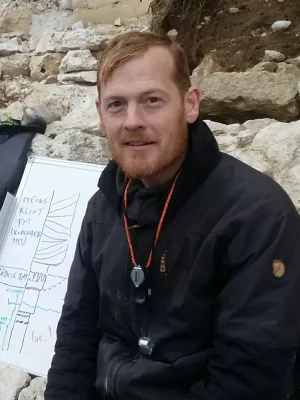
Mikael Calner
Professor

Mid-Norian to Hettangian record and time-specific oolites during the end-Triassic Mass Extinction at Wadi Milaha, Musandam Peninsula, United Arab Emirates
Författare
Summary, in English
The end-Triassic Mass Extinction (ETME) is generally regarded as a consequence of the environmental changes associated with the emplacement of the Central Atlantic Magmatic Province (CAMP) and ranks among the ‘big five’ mass extinctions in Earth history. A notable feature of the ETME is a halt in marine carbonate deposition followed by the formation of unusual facies such as carbonate cement fans and oolites in the early aftermath of the event. The ETME time interval has been well studied over the last few decades, in contrast to a few minor extinction events that preceded it, among them the extinctions associated with the Norian-Rhaetian boundary (NRB). This study provides new insights into these extinction events with complete mid-Norian to Hettangian δ18Ocarb and δ13Ccarb record from a key section at Wadi Milaha (Ras Al Khaimah Emirate, United Arab Emirates). Ooids are important proxies for palaeoenvironmental reconstruction. The post ETME oolite horizon is documented providing morphological classification as well as a detailed modal analysis of rock components and different types of coated grains. Through a multi-technique approach, we argue for the stability of the carbon cycle across the NRB extinction event and the existence of a hiatus at the TJB (Triassic-Jurassic Boundary) in Wadi Milaha. Our new morphological classification of post-extinction ooids is compatible with a major role for seawater geochemistry with respect to sedimentological processes, by example in the peculiar way ooids diversify and alternate with other kinds of coated grains.
Avdelning/ar
- Berggrundsgeologi
Publiceringsår
2023-06
Språk
Engelska
Publikation/Tidskrift/Serie
Journal of Asian Earth Sciences: X
Volym
9
Dokumenttyp
Artikel i tidskrift
Förlag
Elsevier
Ämne
- Geology
Nyckelord
- Arabian Platform
- Chemostratigraphy
- Modal analysis
- Norian-Rhaetian Boundary
- Ooids
- Triassic-Jurassic Boundary
Status
Published
ISBN/ISSN/Övrigt
- ISSN: 2590-0560

